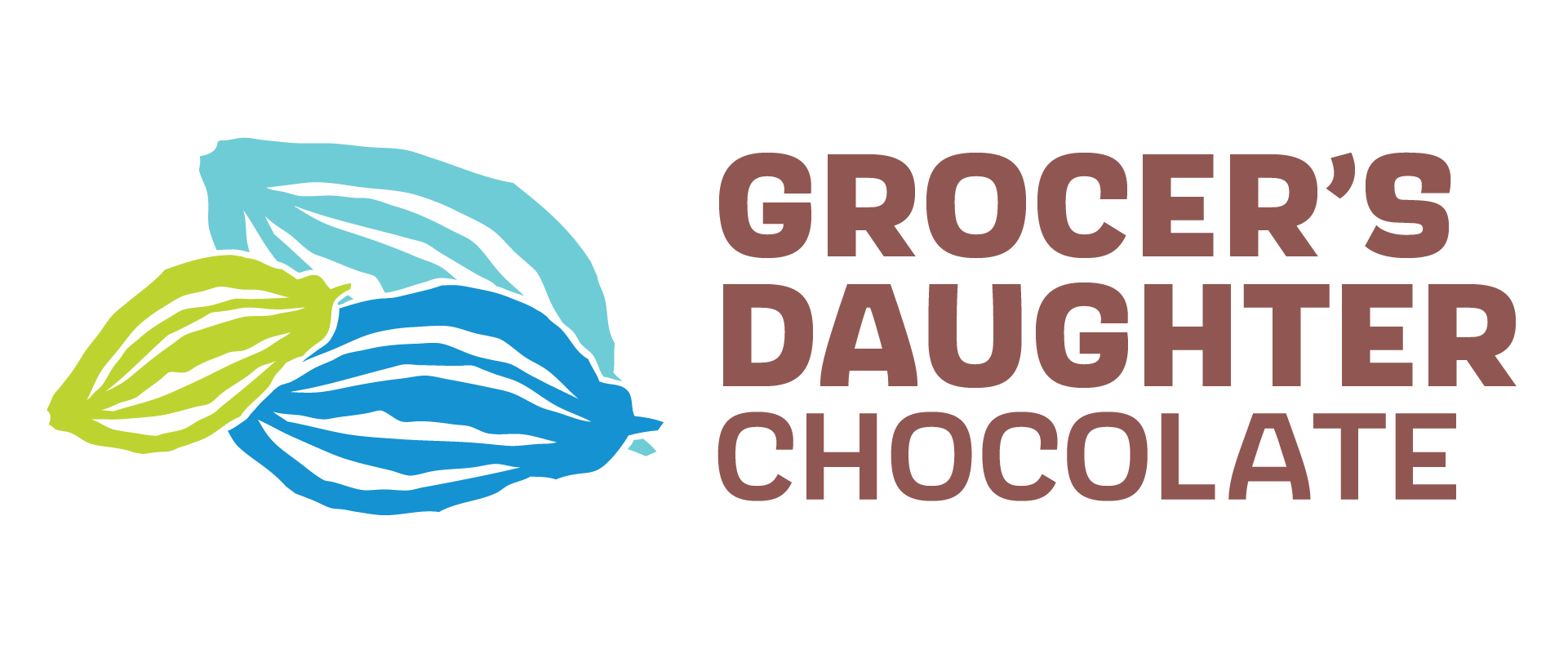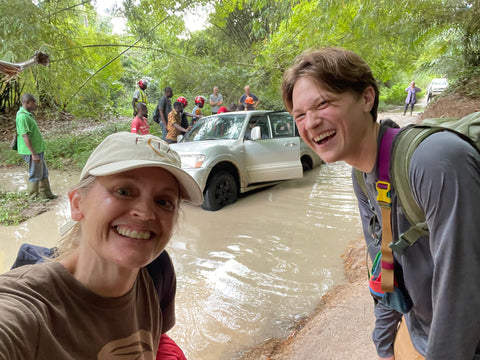March 28, 2024 - In normal circumstances, most of us in the craft chocolate industry would be overjoyed at news of a global cocoa price increase if it meant cocoa farmers would benefit. But the record-breaking spike we're witnessing right now — from approx $2,000/metric ton to over $10,000/metric ton and still climbing — isn’t translating into higher profits for the most impoverished cocoa farmers.

This cocoa crisis is being caused by a confluence of factors, many of which are hitting West African cocoa farmers the hardest.
A SHORTAGE IN GLOBAL COCOA STOCKS FOR THE THIRD CONSECUTIVE YEAR.
Demand is outpacing supply globally and global inventories are at their lowest levels in over 60 years.
THE DEVASTATING EFFECTS OF CLIMATE CHANGE AND DISEASE ON CROP YIELDS.
Due to extreme weather events and infestations like the swollen shoot virus, the yields of the major crop in Ghana and Ivory Coast — who together produce more than 60% of the global cocoa supply — have been decimated. Early estimates say upwards of 30% of the early crop was lost, and many expect a similar impact on the smaller mid-crop. Swollen shoot virus: This cocoa virus has been identified in 11 the 13 cocoa growing regions in Ivory Coast, and it has already destroyed over 500,000 hectares of cacao trees in Ghana. This disease impacts cocoa yields for years to come. Once the virus kills a tree, it will be 5 years before the farmer can replant without risk of the virus returning and another 4-7 years before the new cacao tree will bear fruit. Ghana recently borrowed several hundred million dollars from international funders to invest in the restoration of cacao orchards, despite the undeniable challenges of climate change.

COCOA BOARDS, CONTROLLED PRICES, AND UNDER-INVESTMENT
In Ghana and Ivory Coast, cocoa boards run by their national governments tightly control the markets and cocoa trade. While prices to farmers skyrocket around the globe (some to over $7400 USD/metric ton) Ivorian and Ghanaian farmers are receiving approximately one third of that amount.
Futures trading: The Ivory Coast government presold this year’s crop at the end of last year, when prices were low. If these contracts aren’t fulfilled, it will be considered a default, which can lead to the dissolution of trading partnerships, making it difficult for cocoa boards to access credit to finance future cocoa purchases. Unsurprisingly, there is not enough cocoa being collected to fill last year’s contracts. In an effort to close the gap, Ivorian traders are arguing they can’t pay farmers the increased cost of cacao until last year’s contracts are met. Traders whose contracts are honored at last year’s lower prices stand to gain a tremendous amount of money as they resell at today’s record-breaking prices, while farmers are caught between the pressures of this futures system and a reduced crop. The cocoa producers unions are threatening to strike if the Ivorian CCC (cocoa and coffee board) doesn’t increase prices.
Cocoa smuggling: Some farmers and collectors will, very justifiably, choose to sell their cocoa where it can fetch a higher price in less heavily regulated markets of Liberia, Cameroon, Burkina Faso, or Nigeria, even though it is illegal to smuggle cocoa across the border. This is becoming more difficult, however: an agronomist from the Ivory Coast reported that the government recently ordered extra police to the border to prevent smuggling.
Significant under investment in infrastructure and farmer training/technologies by governments and multinational companies in West Africa further exacerbate the situation as farmers navigate poor soil health, impassable roads due to flooding and a lack of technical assistance for activities vital to sustainable cacao farming like pruning.
FEWER, AGING CACAO FARMERS.
Even before this year's crisis, many cacao farmers began replacing cocoa with higher value cash crops like rubber, palm and cashews. In addition, the pressure of illegal, but far more lucrative, gold mining (known as Galamsey) is always looming. Many blame large multinationals and the Ivorian and Ghanian governments for spending decades filling their coffers with hundreds of millions of profits, while failing to invest in cocoa infrastructure and farmer training.

THE SILVER LINING (& LATIN AMERICAN CHOCOLATE)
The good news is that many cocoa producers in Latin America are benefiting from the price spike. A colleague from Ecuador relayed just last week that large companies are seeing collectors, flush with cash, purchasing almost any quality of bean at record-breaking prices. One cacao bean importer, who supplies many of the small bean to bar makers in the US, has a container of cacao bean en route to the US with an open contract – meaning a final price hasn’t been agreed upon because buyers are allowing the contracts to float until sellers decide on their price. This is incredibly rare in cocoa trading. But, thankfully, in most cacao producing countries in Latin America, farmers are seeing more money in their pockets as a result of the spike –double, and in some cases triple, the amount West African farmers are receiving.
WHAT DOES THIS MEAN FOR GROCER'S DAUGHTER CHOCOLATE?
For chocolate lovers, this unprecedented price spike means there will be changes this year across all chocolate, craft and commodity. While many of us in the chocolate industry have been hearing from producers for many years that this type of situation may occur due to climate change and disease, no one anticipated the extremes we're seeing today.
Chocolatiers (and big brands) may have to reduce the variety of chocolates and flavors they offer as we make hard choices about how to source. Expect price increases. I’ve heard from colleagues in Latin America that large companies are collecting all cocoa - even defective beans that may have been rejected in the past - so it’s likely that quality overall will diminish, especially in mainstream chocolate brands. We’re also hearing about European companies experimenting with recipes formulated with cocoa-like ingredients produced in labs and chocolate-flavored alternatives like carob.
Here at Grocer’s Daughter Chocolate, we won’t be taking such drastic measures. Rest assured that you will always find the best chocolate we can source from reputable, ethical sources (and chocolate that is, in fact, chocolate). That said, we will have to make some changes to keep our production sustainable. You’ll see some price increases in our shop soon, and we may have to discontinue some products as we navigate cocoa shortages and market prices. We’ll continue to create new treats that feature ingredients from closer to home, like the dairy for our gelato sourced from The Farmer’s Creamery, in Mio, Michigan. In times like these we’re grateful for the abundance of local fruits and ingredients – as well as our long-standing partnership with Conexión Chocolate, our dear friends and a well-respected company in the Ecuadorian cocoa market.
The truth is: chocolate in any form is a luxury treat. It's only in recent history that chocolate became inexpensive and widely-available – mostly because of the addition of cheaper ingredients like sugar. If the net result of this year’s market is that more of the wealth of the cocoa value chain makes it into the pockets of cocoa farmers, that’s a win, as long as West African producers benefit too! It’s going to be a wild ride for the chocolate industry but we’ll do our best to keep you informed – and keep you supplied with delicious, ethically-sourced chocolate.
Updates:
4/3/24: The Ivorian government, under threat of a cocoa farmer's strike, announced a 50% increase in the farm gate price (the price paid to the farmer) to $2.47 USD/kg. Still, their counterparts in Cameroon are currently earning $7.39 USD/kg-$8.37USD/kg and last week's farm gate price in Ecuador was $4.75 USC/kg.
4/7/24: The Ghanaian cocoa board announced an increase to $2.47 USD/kg, same as the Ivory Coast.
On April 14th, representatives of Ivorian cocoa producer and collection groups will meet in central Ivory Coast to determine whether they will demand further increases.





